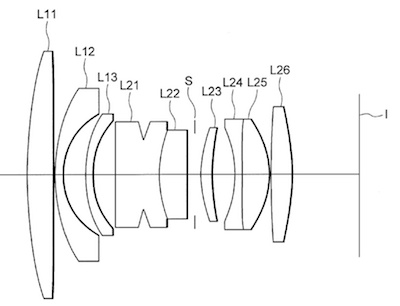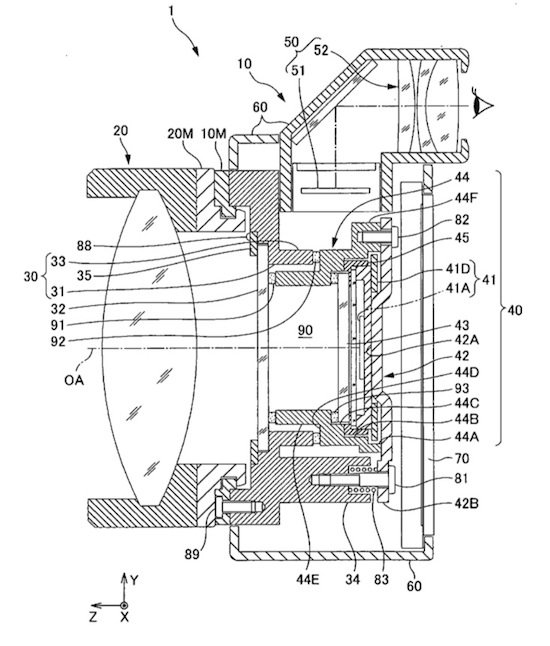A quick update on the latest Nikon patents before the announcements start tomorrow.
Patent application 20100195221 is for a 24mm FX wide angle lens. Two examples are shown – one with f/2.8 and one with f/3.5:
First example (f/2.8) | Second example (f/3.5):
f = 24.698 | 24.400 (focal length)
FNO = 2.9 | 3.596 (aperture)
ω = 41.86° | 42.44°
Y = 21.6 | 21.6
TL = 74.298 | 68.898
Σd = 36.297 | 30.900
Bf = 38.000 | 37.998
Patent application 20100194974 is similar to the previously reported patent from Japan, but the US version has very detailed drawings of what appears to be an EVIL camera (there is still a mirror in the viewfinder):
Interesting: in all illustrations it seems that there is no shutter, or at least I cannot see one. The same patent application contains also a detailed drawings of the sensor housing (3:2 aspect ratio) and the lens mount:
You can see all other drawings from this patent appliction in this PDF file. The “EVIL” question remains – is it going to have a DX size sensor? If you do some calculations and assumptions based on the provided aspect ratios in the illustrations, one possibility is a 17mm sensor diagonal with a 3:2 aspect ratio (14.14 mm x 9.43 mm), then the sensor housing plate will be 48 mm (square). If this was the real body size (with viewfinder), the size of the camera could be about 78 mm high and 38 mm deep. If this is a DX sensor, the camera will be too big with the given aspect ratios (the sensor housing plate will be 80 mm square).
Patent application 20100172639 involves VR and is probably aimed at the issue that the lens may not be centered at the start of the exposure:
“However, with a camera endowed with a prior art vibration compensation function, even before the photographic operation in which full pressing of the release button is performed, vibration compensation is performed by shifting the compensation lens within its range of movement according to any detected vibration. Due to this, at the time point when the release button is full pressed and photography is started, the compensation lens is not restricted to being almost at its central position within its range of movement. If the shutter is released in the state in which the compensation lens is shifted to one corner of its range of movement, then it becomes impossible to shift the compensation lens further in that direction, and there is a fear that sometimes the advantageous effects of vibration compensation may be lost.”
And now the fun part: Nikon filed three patent applications in Japan (2010-061383, 2010-061382, 2010-061381) for “Automatic recipe creation aparatus and program:
“PROBLEM TO BE SOLVED: To solve the problems wherein doneness of dishes prepared by recipes cannot be evaluated objectively and past evaluations cannot be reflected in later recipes.
SOLUTION: An automatic recipe creation apparatus includes an imaging means for capturing a dish presentation image, an image processing means for extracting presentation features from the dish presentation image captured by the imaging means, a recipe database for storing presentation images and presentation standards of each kind of dish, and an evaluation means for comparing the presentation features extracted by the image processing means with the presentation standards stored in the recipe database.”











